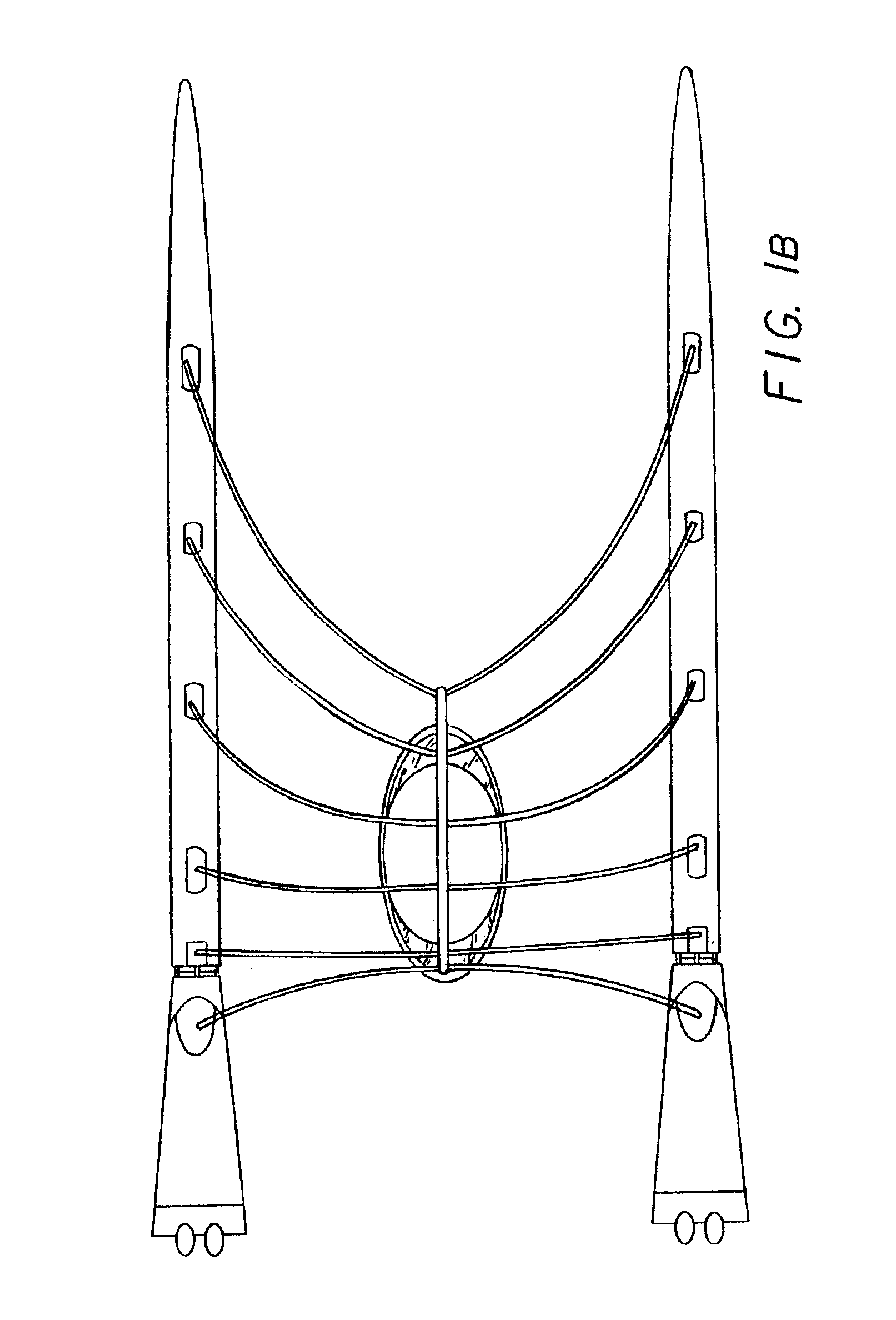Flexible ocean-going vessels with surface conforming hulls
a flexible, ocean-going technology, applied in the direction of special-purpose vessels, vessel construction, marine propulsion, etc., can solve the problems of limiting the attainable speed of a given power plant and vessel length, requiring power increase, and conventional designs subject the mechanical structure of the vessel to enormous impacts
- Summary
- Abstract
- Description
- Claims
- Application Information
AI Technical Summary
Benefits of technology
Problems solved by technology
Method used
Image
Examples
Embodiment Construction
The type of boat design that lends itself most easily to the implementation of this invention is the catamaran. There are two main components in a catamaran: the twin hulls and the structure that holds the hulls together. This invention requires the hulls and the connecting structure to be made of such materials as to provide a high degree of flexibility and shock absorbing capability. Thus the hulls could be made of inflatable rubberized fabric (like nylon reinforced polyurethane) and the connecting structure with composite materials (like carbon reinforced epoxy, glass reinforced thermoplastics, etc.).
A problem for all existing power catamarans is the fact that, due to the wide beam necessary for stability, the stern sections of the hulls tend to come out of the water in a seaway, thus causing the propeller of the power plant to cavitate and lose forward driving force. This invention solves this problem by separating the stern section of each hull from the main hull. Each stern se...
PUM
 Login to View More
Login to View More Abstract
Description
Claims
Application Information
 Login to View More
Login to View More - R&D
- Intellectual Property
- Life Sciences
- Materials
- Tech Scout
- Unparalleled Data Quality
- Higher Quality Content
- 60% Fewer Hallucinations
Browse by: Latest US Patents, China's latest patents, Technical Efficacy Thesaurus, Application Domain, Technology Topic, Popular Technical Reports.
© 2025 PatSnap. All rights reserved.Legal|Privacy policy|Modern Slavery Act Transparency Statement|Sitemap|About US| Contact US: help@patsnap.com



